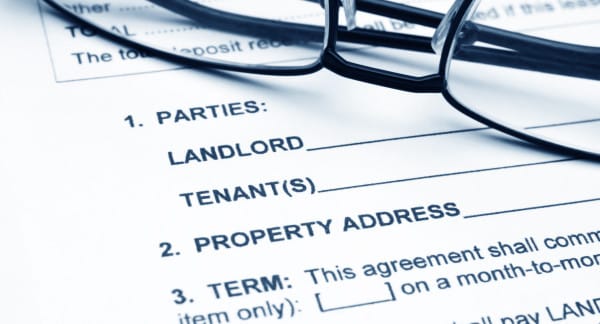Signing a lease for an office is a decision that will greatly impact your tax business. A good choice can dramatically improve your success, but a mistake could be disastrous. You must not take this chore lightly or rush through the process. Knowledge is power and to be on equal footing with the landlord, or more likely the landlord’s leasing agent, you must educate yourself in the rules of the leasing game and obtain as much information about the property, the landlord and the local market conditions as possible.
With that being said, there are several general items within a lease that can be negotiated that will save you money. Here are just a few things to consider negotiating before signing a lease.
Know Who You Are Negotiating With
First thing’s first, you need to know who you’re going to be negotiating with. The ease with which you can negotiate a favorable lease will depend, in part, on the type of landlord who owns the premises. What your lease will entail, how you will interact and negotiate, and the types of things that are negotiable all depend on who you are dealing with. For example, an individual owner/investor is going to place more importance on your character and have a less detailed lease than a leasing agent would.
Here are the different types of landlords you may encounter.
- Individual Owner/Investor
- Individual Owner/Co-Tenant
- Limited Partnership or Corporation
- Limited Partnership or Corporation
- Property Development Company
- Investment Trust Company
- Leasing Agent
Check the Square Footage
Measure the dimensions of the premises and calculate the exact square footage of the space before signing a lease. It is not unusual for the square footage of the space you’re leasing to be overstated in the lease, resulting in a significant overcharge of rent. Note that some landlords add to the square footage of subdivided space with a proportionate share of common area space such as halls and rest rooms, and they often measure from the outside of exterior walls and to the middle of shared interior walls.
Lease Terms
Be sure to check on the lease commencement date and termination date to ensure that you will not be paying rent and unable to use your office during construction and/or build-out. Insist on exact calendar dates for commencement and termination and provide for the right to cancel the lease in the event that the premises is not delivered on the date you need possession.
Always try to start a new lease on January 1st and obtain early possession — rent-free — to set-up the office for occupancy, and have the lease end on April 30.
Rent Charges
Quite often a big problem is finding a suitable space that is not too large. Your main office can probably be operated comfortably in a 1,000- to 1,200-square-foot space. For a branch office, 600-800 square feet should be adequate. Professional office buildings often afford flexibility, but retail storefronts in most shopping centers tend to start at 1,000 to 1,600 square feet. Because it is to a landlord’s advantage to build and rent larger spaces, there is a shortage of small stores in prime retail shopping centers in most sizeable markets. If you rent a space that is 25-50% larger than necessary, not only will your rent be higher, but your electrical and heating & air conditioning cost will be increased proportionately.
There are a couple of things you can do if you are looking at a space too large for what you need:
1. Suggest to the landlord that the space be subdivided. Usually, the space will be too deep, in which case an adjacent existing or future tenant might be willing to expand into the rear of your space, leaving you with a smaller store.
2. Ask to pay for only the square footage you need. If you are signing a long-term lease, ask for an abatement of rent for up to six months or longer, especially if the landlord is incurring little or no cost to make improvements to the premises. Depending on market demand for space, landlords have been known to allow up to a year of rent-free occupancy to attract a good long-term tenant. It doesn’t hurt to ask!
“Pass-Through” Charges
Many retail shopping center landlords offer only “triple net leases”, which means that all costs of operating and maintaining the shopping center are passed through to the tenants. Under a net lease, each tenant pays a percentage of these “pass-through” charges equal to the percentage of the total center leasable space occupied by the tenant. Therefore, if the center is 100% leased, the landlord pays none of the costs.
When negotiating a lease with pass-through charges, you should find out how much those charges are currently running per square foot of leased space in the shopping center and add that to the base rental rate for comparison to other options.
Utilities
Utilities should be considered along with rent and pass-through charges as occupancy costs for comparison shopping and budgeting purposes. Ask the utility company (or the previous tenant) to provide you with the actual cost of utilities for the past year or two.
Build-outs and improvements
It is common for landlords to spend substantial sums of money for “build-outs” needed by long-term tenants. Rent rates will reflect the cost of such build-outs, which will be recovered by the landlord over the term of the lease. As an alternative to making build-outs, the landlord may agree to a lower rent, or an abatement of rent, or may even give you a payment or allowance to make the desired improvements. Often you can do the build-outs for less cost than the landlord. Before negotiating, find out what the landlord has done for other tenants.
More Great Reads:
Keep Business Coming After the Deadline

